
The Continuation War was a conflict fought by Finland and Nazi Germany, against the Soviet Union (USSR) from 1941 to 1944, as a part of World War II. In Soviet historiography, the war was called the Finnish Front of the Great Patriotic War. Germany regarded its operations in the region as part of its overall war efforts on the Eastern Front and provided Finland with critical material support and military assistance, including economic aid.

Finland, officially the Republic of Finland, is a Nordic country located in Northern Europe. Finland shares land borders with Sweden to the west, Russia to the east, and Norway to the north and is defined by the Gulf of Bothnia to the west and the Gulf of Finland to the south that are part of the Baltic Sea.

Helsinki is the capital, primate and most populous city of Finland. Located on the shore of the Gulf of Finland, it is the seat of the region of Uusimaa in southern Finland, and has a population of 656,229. The city's urban area has a population of 1,268,296, making it by far the most populous urban area in Finland as well as the country's most important center for politics, education, finance, culture, and research; while Tampere in the Pirkanmaa region, located 179 kilometres (111 mi) to the north from Helsinki, is the second largest urban area in Finland. Helsinki is located 80 kilometres (50 mi) north of Tallinn, Estonia, 400 km (250 mi) east of Stockholm, Sweden, and 300 km (190 mi) west of Saint Petersburg, Russia. It has close historical ties with these three cities.
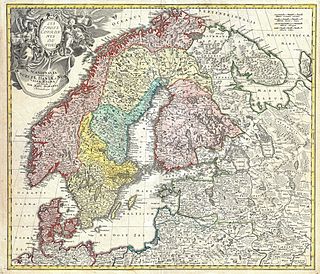
The History of Finland begins around 9,000 BC during the end of the last glacial period. Stone Age cultures were Kunda, Comb Ceramic, Corded Ware, Kiukainen, and Pöljä cultures. The Finnish Bronze Age started in approximately 1,500 BC and the Iron Age started in 500 BC and lasted until 1,300 AD. Finnish Iron Age cultures can be separated into Finnish proper, Tavastian, and Karelian cultures. The earliest written sources mentioning Finland start to appear from the 12th century onwards when the Catholic Church started to gain a foothold in Southwest Finland.
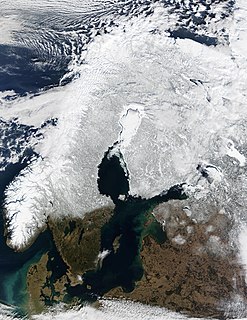
Scandinavia is a subregion in Northern Europe, with strong historical, cultural, and linguistic ties. The term Scandinavia in local usage covers the three kingdoms of Denmark, Norway, and Sweden. The majority national languages of these three belong to the Scandinavian dialect continuum, and are mutually intelligible North Germanic languages.

The Winter War was a war between the Soviet Union (USSR) and Finland. It began with a Soviet invasion of Finland on 30 November 1939, three months after the outbreak of World War II, and ended three and a half months later with the Moscow Peace Treaty on 13 March 1940. Despite superior military strength, especially in tanks and aircraft, the Soviet Union suffered severe losses and initially made little headway. The League of Nations deemed the attack illegal and expelled the Soviet Union from the organisation.

Espoo is the second largest city and municipality in Finland. It is part of the Finnish Capital Region, along with the cities of Helsinki, Vantaa, and Kauniainen. Most of its population lives in the inner urban core of the Helsinki metropolitan area. Espoo shares its eastern border with Helsinki and Vantaa, while enclosing Kauniainen. Other bordering municipalities of Espoo are Nurmijärvi and Vihti in the north, and Kirkkonummi in the west. The city is located on the shore of the Gulf of Finland, in the region of Uusimaa, and has a population of 291,439.

Turku is a city and former capital on the southwest coast of Finland at the mouth of the Aura River, in the region of Finland Proper (Varsinais-Suomi) and the former Turku and Pori Province. The region was originally called Suomi (Finland), which later became the name for the whole country. As of 30 September 2018, the population of Turku was 191,499 making it the sixth largest city in Finland after Helsinki, Espoo, Tampere, Vantaa and Oulu. There were 330,192 inhabitants living in the Turku sub-region, ranking it as the third largest urban area in Finland after the Greater Helsinki area and Tampere sub-region. The city is officially bilingual as 5.2 percent of its population identify Swedish as a mother-tongue.

Tampere is a city in Pirkanmaa in the western part of Finland. Tampere is the most populous inland city in the Nordic countries; it has a population of 238,140 with the urban area holding 334,112 people and the metropolitan area, also known as the Tampere sub-region, holding 385,301 inhabitants in an area of 4,970 km2 (1,920 sq mi). Tampere is the second-largest urban area and third most-populous individual municipality in Finland, after the cities of Helsinki and Espoo and the most populous Finnish city outside the Greater Helsinki area, within which both Helsinki and Espoo are located. Tampere is a major urban, economic, and cultural hub for central Finland.

Nightwish is a symphonic metal band from Kitee, Finland. The band was formed in 1996 by lead songwriter and keyboardist Tuomas Holopainen, guitarist Emppu Vuorinen, and former lead singer Tarja Turunen. The band soon picked up drummer Jukka Nevalainen, and then bassist Sami Vänskä after the release of their debut album, Angels Fall First (1997). In 2001, Vänskä was replaced by Marko Hietala, who also took over the male vocalist role previously filled by Holopainen or guest singers. In January 2021, it was announced that Hietala had left the band.
Karelia, the land of the Karelian people, is an area in Northern Europe of historical significance for Russia, the USSR, Finland and Sweden. It is currently divided among the northwestern Russian Federation and Finland.

The Grand Duchy of Finland was the predecessor state of modern Finland. It existed between 1809 and 1917 as an autonomous part of the Russian Empire.

Finns or Finnish people are a Baltic Finnic ethnic group native to Finland.
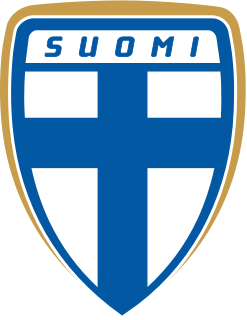
The Finland national football team represents Finland in men's international football competitions and is controlled by the Football Association of Finland. The team has been a member of FIFA since 1904 and a UEFA member since 1957.

Finland participated in the Second World War initially in a defensive war against the Soviet Union, followed by another battle with the Soviet Union acting in concert with Nazi Germany and then finally fighting alongside the Allies against Nazi Germany. As relations with the Soviet Union changed during the war, Finland was placed in the situation of being for, then against and then for the overall interests of the Allied powers.
The Official Finnish Charts are national record charts in Finland compiled and published by Musiikkituottajat – IFPI Finland. The name Suomen virallinen lista/Finlands officiella lista, which is singular in both Finnish and Swedish, is used generically to refer to both the albums and the singles chart, and the context reveals which chart is meant.

Finnish is a Uralic language of the Finnic branch spoken by the majority of the population in Finland and by ethnic Finns outside Finland. Finnish is one of the two official languages of Finland. In Sweden, both Finnish and Meänkieli are official minority languages. The Kven language, which like Meänkieli is mutually intelligible with Finnish, is spoken in Norway's Finnmark by a minority group of Finnish descent.
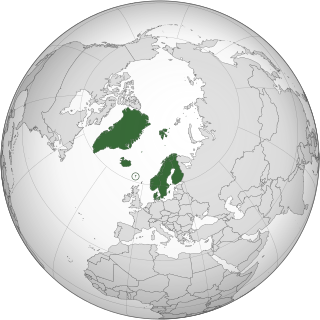
The Nordic countries, or the Nordics, are a geographical and cultural region in Northern Europe and the North Atlantic, where they are most commonly known as Norden. The region includes the sovereign states of Denmark, Finland, Iceland, Norway and Sweden, as well as the autonomous countries of the Faroe Islands and Greenland, which are both part of the Kingdom of Denmark. The Åland Islands, an autonomous region of the Republic of Finland; Jan Mayen island and the archipelago of Svalbard, both unincorporated areas of Metropolitan Norway, are also included. Bouvet Island, a dependency of the Kingdom of Norway, is sometimes not considered a part of the Nordic countries due to its remote geographical location. Several regions in Europe such as the Northern Isles of Scotland and Estonia share cultural and ethnic ties with the Nordic nations, but are not considered to be part of the Nordic countries today. Scandinavians, who comprise over three quarters of the region's population, are the largest group, followed by Finns, who comprise the majority in Finland; other ethnic groups are the Greenlandic Inuit, the Sámi people, and recent immigrants and their descendants. The native languages Danish, Norwegian, Swedish, Icelandic, and Faroese are all North Germanic languages rooted in Old Norse. Native non-Germanic languages are Finnish, Greenlandic languages and several Sámi languages. The main religion is Lutheran Christianity.
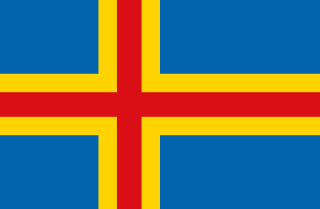
Åland is an archipelago at the entrance to the Gulf of Bothnia in the Baltic Sea belonging to Finland. It is an autonomous and demilitarised region of Finland since 1920 by a decision of the League of Nations, and is Finland's only monolingually Swedish-speaking region. It is the smallest region of Finland, constituting 0.51% of its land area and 0.54% of its population. Mariehamn is the capital city of Åland.

The COVID-19 pandemic in Finland is part of the worldwide pandemic of coronavirus disease 2019 caused by severe acute respiratory syndrome coronavirus 2. On 29 January 2020, the first case in Finland was confirmed, when a Chinese tourist visiting Ivalo from Wuhan tested positive for the virus.



















